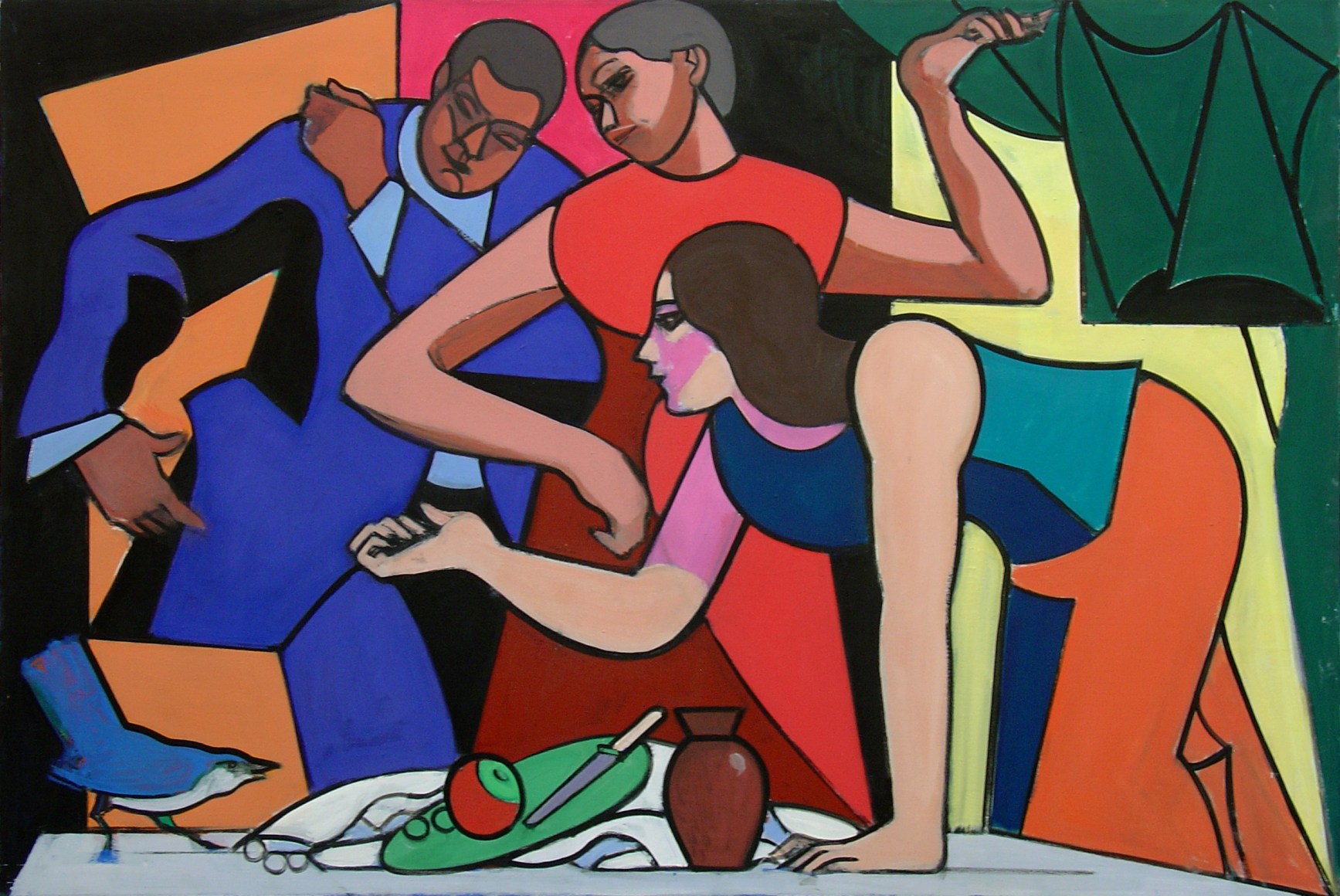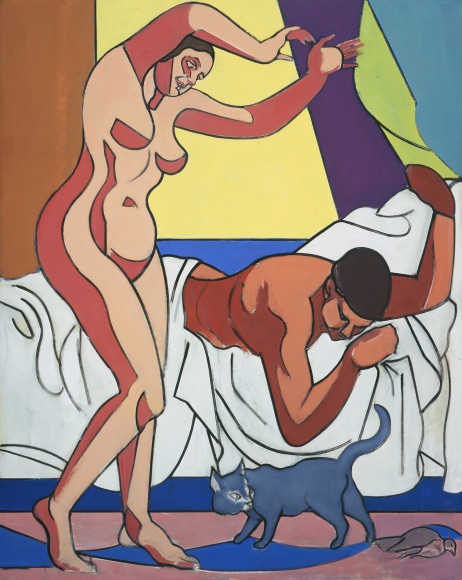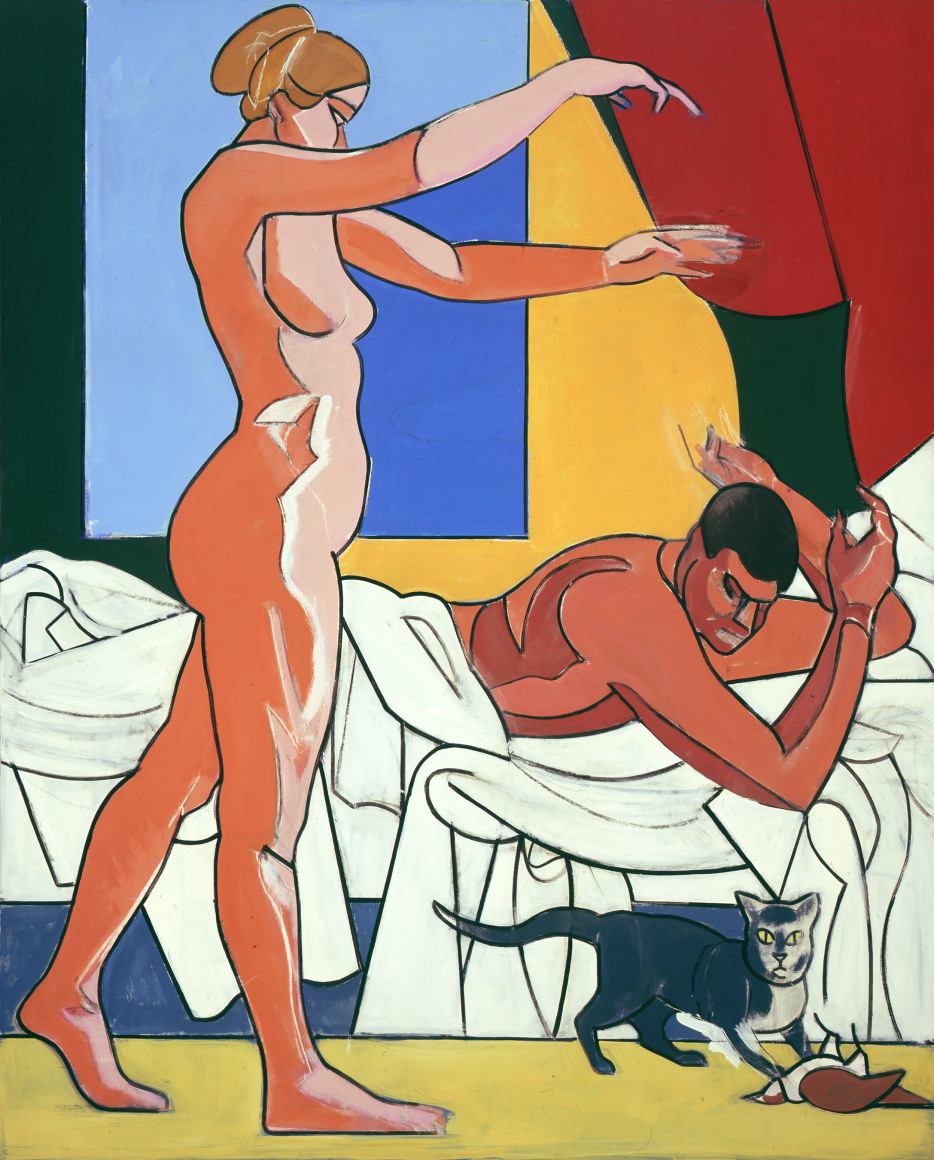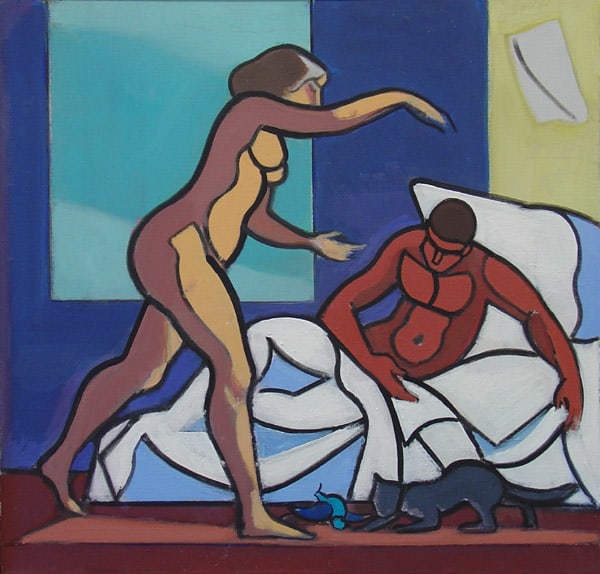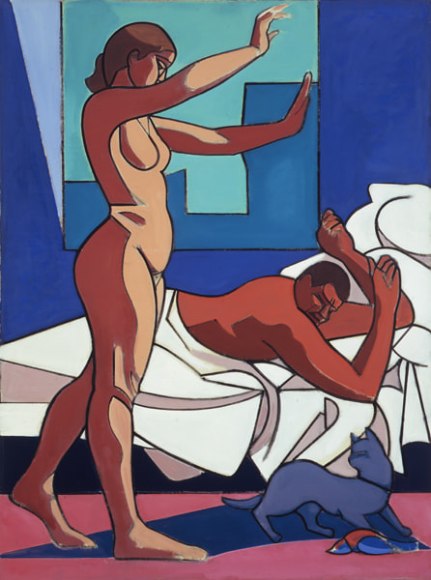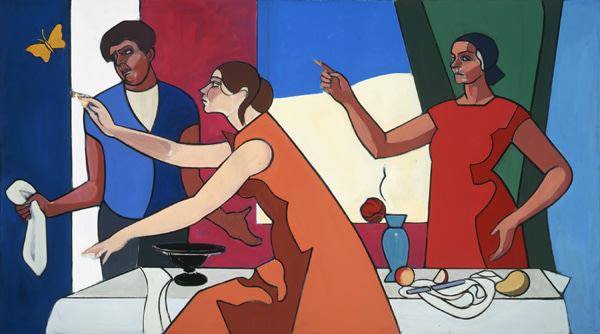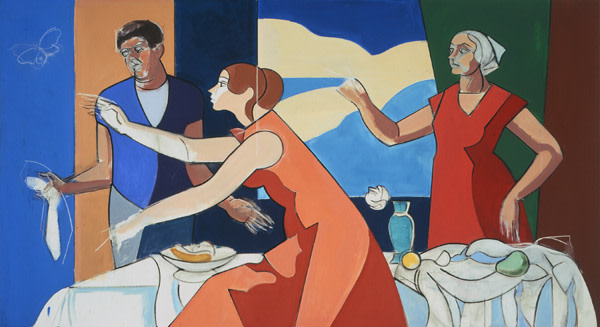Lori Bookstein Fine Art is pleased to present a selection of major late works, along with supporting drawings and paintings, by Leland Bell. The exhibition is the first one-person show of Bell’s work in the last ten years and the third since the artist’s death in 1991. Lori Bookstein Fine Art is pleased to represent the Estate of Leland Bell.
Bell began his painting career as a vocal supporter of the abstraction of Arp and Mondrian. Arriving in New York City in the mid-1940s, he joined a group of young artists, including Nell Blaine, Al Kresch, and Louisa Matthíasdóttir, who were involved in the Jane Street Gallery artist collective and set out to redefine it in through their abstract tenets. Within a few years, however, Bell would renounce pure abstraction and turn to figuration as the framework within which to develop his own aesthetics – the first of several career choices which demonstrated a steady disregard for current fashion. (Later, when Clement Greenberg would crown the stewards of the new American abstraction, Bell's personal artistic pantheon would expand to include the less popular French painters Jean Hélion, Balthus, and the post-Fauvist works of André Dérain.)
"Theme and Variation" is comprised of the work Bell made in his last years, from the early 1980s to 1991. Although four decades separate this group from his early embrace of abstraction, the late works reveal a significant debt to his Jane Street years. In essence, they are not a complete rejection of abstract painting, but rather a synthesis of the idealist lessons of modernist abstraction with the compositional structure of the classical figurative tradition.
The monumental multi-figure compositions bring together three subjects addressed repeatedly by Bell throughout his life: the portrait, self-portrait, and still life. In the Morning series, a female nude stands by a recumbent male, their attention focused on the presence of a cat and a dead bird; the Family Group with Bird and Family Group with Butterfly paintings depict other equally dramatized domestic scenes – that of a mother, father, and daughter at a table, engaged with an avian intruder. Despite the potency and intimacy of these captured moments, Bell did not encourage symbolic or psychological interpretations of his work. His constant search to imbue canvases with pure, formal principles was mirrored by the ideal of infusing subject matter with universal resonance.
In the late work, Bell succeeds in creating a balanced tension between line and shape, flatness and depth, light and shadow. Areas of bold, unmodulated color produce purely optical sensations, while simultaneously working on another level to evoke changes of mood and carve out real space. Outlining the large color areas are precise, black lines which, seductive as they are in their graphic appeal, are equally important in the creation of plastic space.
An avid jazz listener and drummer, Bell applied the fundamentals of music to painting. He referred often to the idea of visual rhythm in the work of other artists and his own – whether in the play of one color off of another, the internal rhythm of the individual parts of an image, or the overall resonance of the completed structure. And, as with a jazz musician submitting his riffs to fresh interpretation, Bell saw his paintings as continuous works in progress, foundations for improvising new variations on the same core image.
Leland Bell [1922-1991] was born in Cambridge, Maryland, where early exposure to the Phillips Collection in Washington contributed to a lifelong passion for the study of art in museums. Bell studied with the painter Karl Knaths in Provincetown, Massachusetts before moving to New York. He was a founding faculty member at the New York Studio School and the Parsons School of Design graduate painting program. A dedicated teacher, he also taught at Yale University, the Kansas City Art Institute, and Indiana University. Bell was married to the Icelandic artist Louisa Matthíasdóttir; their daughter, Temma Bell, is also a painter.
A panel discussion on the work of Leland Bell will be held at Lori Bookstein Fine Art on Tuesday, April 26, at 6:30 pm. It will be moderated by the art historian Martica Sawin, with panel members Simon Carr, Bruce Gagnier, John Goodrich, Ying Li, and Paul Resika, and an introduction by Temma Bell.
Leland Bell: Theme and Variation will be on exhibit through May 21, 2011. Gallery hours are Tuesday through Saturday, 10:30 to 6. For more information or visual materials, please contact the gallery at (212) 750-0949.

